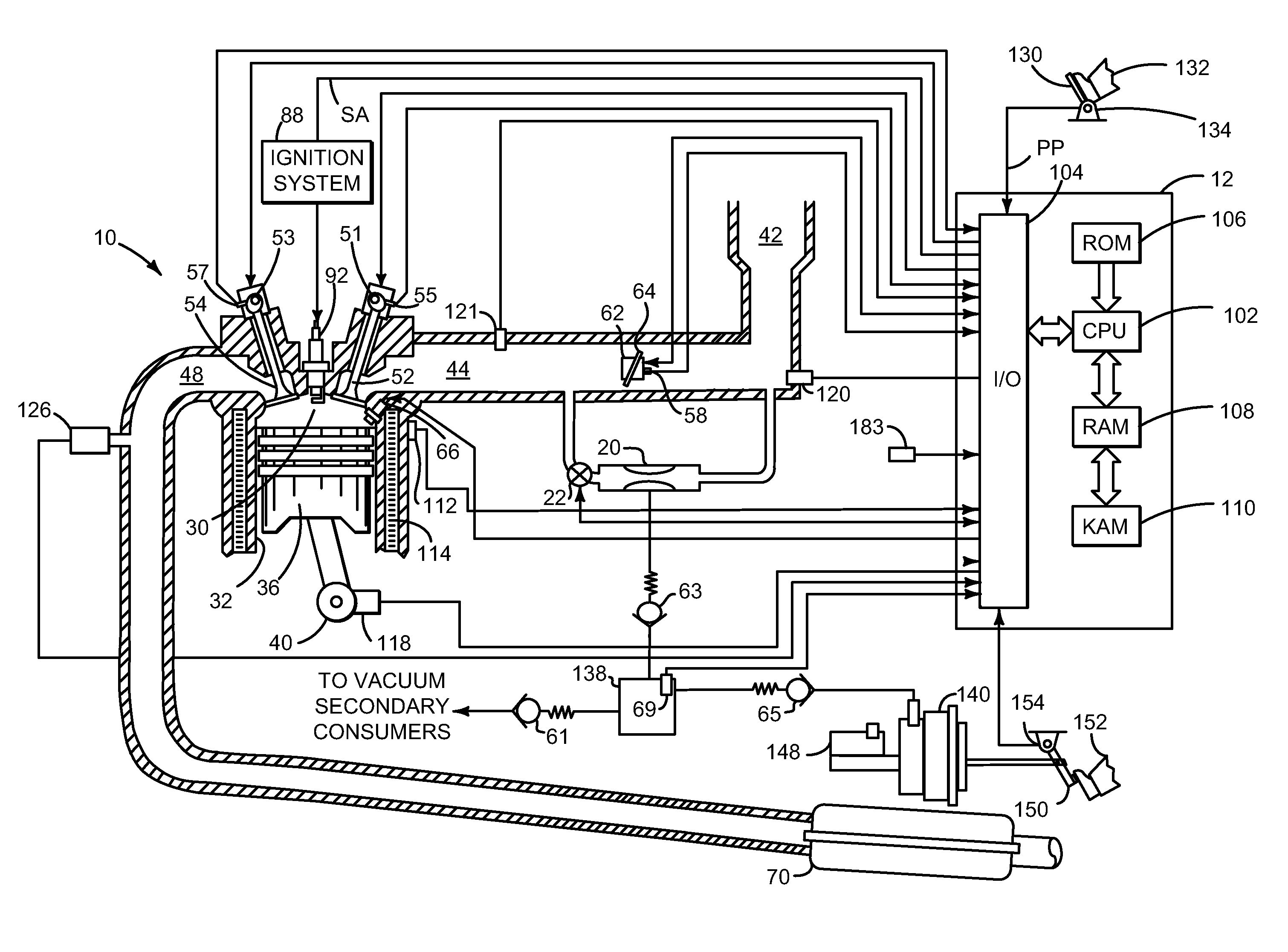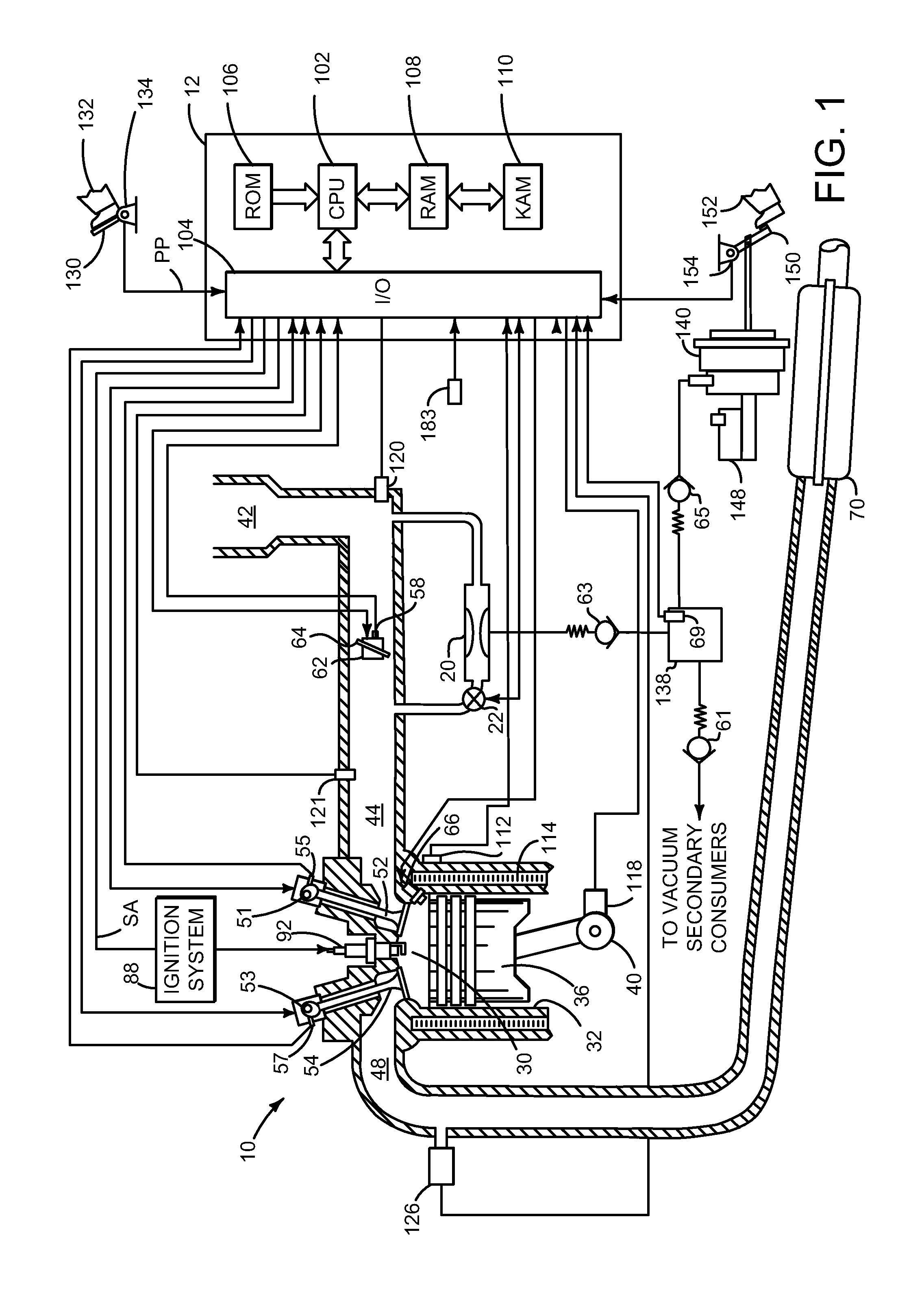System and method for generating vacuum for a vehicle
a technology for vacuum consumers and vehicles, applied in water supply installations, combustion-air/fuel-air treatment, separation processes, etc., can solve the problems of more difficult to produce vacuum via the engine at higher altitudes, more difficult to reduce the torque of the engine, and more cost-effective effects
- Summary
- Abstract
- Description
- Claims
- Application Information
AI Technical Summary
Benefits of technology
Problems solved by technology
Method used
Image
Examples
Embodiment Construction
[0016]The present description is related to providing vacuum to a vehicle. Vacuum is provided by an engine to a vacuum reservoir as shown in FIG. 1. The engine may be included in a vehicle that includes an air conditioning system as shown in FIGS. 2-4. The air conditioning system may be operated as shown in the sequence of FIG. 5 to improve vacuum generation within an engine. The method of FIG. 6 describes a way of controlling load applied to an engine so that the engine may provide vacuum while at the same time reducing the possibility of aggravating passengers due to loss of operation of vehicle systems while generating vacuum.
[0017]Referring to FIG. 1, internal combustion engine 10, comprising a plurality of cylinders, one cylinder of which is shown in FIG. 1, is controlled by electronic engine controller 12. Engine 10 includes combustion chamber 30 and cylinder walls 32 with piston 36 positioned therein and connected to crankshaft 40. Combustion chamber 30 is shown communicating...
PUM
| Property | Measurement | Unit |
|---|---|---|
| time | aaaaa | aaaaa |
| time | aaaaa | aaaaa |
| time | aaaaa | aaaaa |
Abstract
Description
Claims
Application Information
 Login to View More
Login to View More - R&D
- Intellectual Property
- Life Sciences
- Materials
- Tech Scout
- Unparalleled Data Quality
- Higher Quality Content
- 60% Fewer Hallucinations
Browse by: Latest US Patents, China's latest patents, Technical Efficacy Thesaurus, Application Domain, Technology Topic, Popular Technical Reports.
© 2025 PatSnap. All rights reserved.Legal|Privacy policy|Modern Slavery Act Transparency Statement|Sitemap|About US| Contact US: help@patsnap.com



